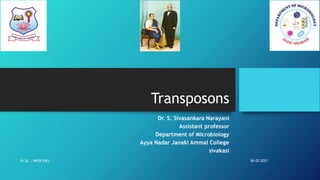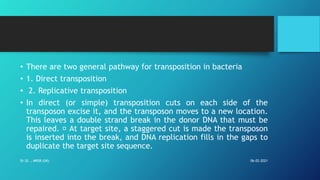Transposons are segments of DNA that can move from one location in the genome to another. There are two main types: insertion sequences (IS), which are short DNA sequences that code for transposase enzymes; and transposons, which can carry additional genes and are flanked by IS elements or inverted repeats. Transposition occurs when the transposase enzyme cuts and inserts the transposon into a new target site, sometimes duplicating flanking DNA. This movement allows transposons to generate genetic diversity and influence genome evolution over generations.


































